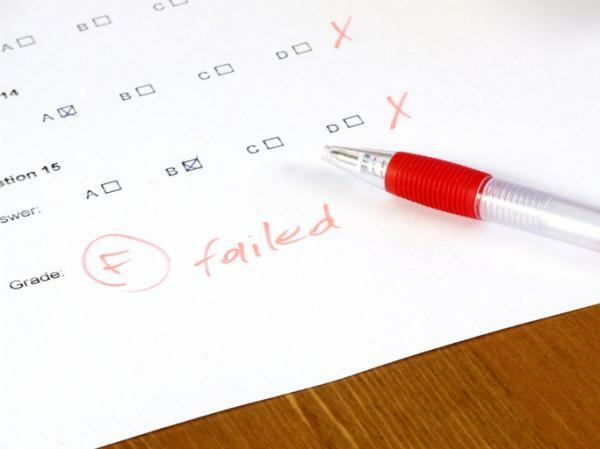
Benjamin Bloom was the creator of Bloom's taxonomy. This taxonomy classifies and orders people's learning, leading to better planning action by teaching professionals. In this sense, it is a fundamental tool for the teaching and learning process, which is why most teachers use it to establish learning goals and objectives. To learn more about the creation of Benjamin Bloom, do not hesitate to continue reading this Psychology-Online article: Bloom's taxonomy: what it is, what it is for and objectives.
Index
- What is Bloom's Taxonomy: Summary
- Bloom's taxonomy: objectives
- Bloom's taxonomy: levels
- What is Bloom's taxonomy for?
- Bloom's Taxonomy: Verbs
- Bloom's taxonomy: table
What is Bloom's taxonomy: summary.
As we have already mentioned, Benjamin Bloom, Ph.D. in Education from the University of Chicago, was the creator of the Bloom's taxonomy. It is a taxonomy that classify learning domains, that is, a list that classifies the skills and processes that may appear in school educational tasks and, therefore, become the object of evaluation. Thus, according to this taxonomy, it is understood that, after carrying out a teaching-learning process, students must have acquired new skills and new knowledge.
Specifically, Benjamin Bloom developed a hierarchy of educational objectives that are intended to be achieved with the students. In this way, students cannot reach the higher objectives without first having reached the lower objectives classified in the hierarchy. Within this hierarchy, three domains are identified: cognitive, affective and psychomotor, on which we will delve further below.
Bloom's taxonomy: objectives.
The taxa or classified groups (domains) are hierarchically structured. Each of these groups encompasses different subgroups or subareas and, at the same time, these large groups are conditioned and subordinated to larger groups. So the higher groups cannot be reached or achieved without previously reaching the lower groups.
Thus, as we have mentioned, they are distinguished three educational objectives or hierarchically classified domains: the cognitive domain, the affective domain and the psychomotor domain.
Bloom's taxonomy: levels.
1. Bloom's cognitive domain
This domain of Bloom's taxonomy refers to the intellectual area of the students. In addition, the cognitive domain comprises six levels or subareas that must be taken into account: knowledge, understanding, application, analysis, synthesis and evaluation.
- Knowledge: This level refers to the knowledge that students should have about specific data and the ways and means of treating said data. These are generally items that must be memorized.
- Understanding: For students, this level consists of capturing the direct meaning of a communication, of a phenomenon, or of the appreciation of an event that has happened. It should also be noted that this level is subdivided into three other levels: transfer (change a form of information to other), interpretation (explaining the concept in a personalized way), and extrapolation (determining possible results or consequences).
- App: At this level, reference is made to the ability to apply the information learned to a real or hypothetical case or problem.
- Analysis: It is at this point that the different parts of the same problem must be divided in order to be exhaustively analyzed. Thus, we understand three types of analysis: element analysis (identifying the elements that make up a whole), relationship analysis (capturing the existing relationships in the same event) and analysis of organizational principles (identify guidelines that support the structure of the trouble).
- Synthesis: refers to the verification of the elements that make up a whole, that is, the verification of the different parts that make up the problem or situation to be evaluated.
- Evaluation: this last level includes the critical attitude that students must have in the face of the facts that make up the problem.
2. Bloom's affective dominance
In this domain of Bloom's taxonomy the educational objectives are based on the awareness and growth of the students regarding attitude, emotions and feelings (own and others). Within the affective domain, five subareas can be identified, arranged hierarchically, from the lowest level to the higher, which must be achieved in an orderly manner: reception, response, assessment, organization and characterization.
- Reception: At this level, students must be able to pay attention and passively observe their own emotions and attitudes and those of the people around them. In other words, it is about an awareness of emotions and attitudes.
- Answer: Students must actively participate in their learning process, attending to stimuli (reception) and reacting to them in one way or another.
- Assessment: Students must assign values to objects, phenomena and / or information. It is an internalized and conscious behavior.
- Organization: At this level, students can group the different assigned values, the different information and ideas and accommodate this whole set within their own mental scheme. In this way, students can compare, relate and elaborate all the information they have learned.
- Characterization: At this level, students have already forged a particular value or belief that influences their behavior, thus becoming a personal characteristic.
3. Bloom's psychomotor domain
The educational objectives of the psychomotor domain refer to the change developed in behavior, dexterity and / or psychomotor skills of students, such as manipulating objects with hands. This domain of Bloom's taxonomy comprises five subareas to consider: perception, predisposition, guided response, mechanical response, and evident complete response.
- Perception: This is the first of the levels and consists of the students becoming aware of the outside world that surrounds them through the senses.
- Predisposition: The students must demonstrate that they are physically, mentally and emotionally prepared to be able to carry out the determined activities.
- Guided response: At this level, students are guided by the teacher or by accompanying instructions to carry out certain actions, that is, it is about carrying out actions through aid that will later be withdrawn in due course moment.
- Mechanical response: When the students have carried out the guided actions several times, it will give rise to a mechanical response for said actions. Therefore, this level represents the time before or before the response becomes a regular automated response.
- Full answer evident: This level refers to the moment when students are able to carry out these actions effectively and efficiently without the need for any help.
What is Bloom's taxonomy for?
Bloom's taxonomy is very useful and efficient for set learning goals for students and, thus, plan the teaching-learning process. However, it should be noted that in order to properly plan the learning process of students, it is essential to be clear about a number of aspects. More specifically, the learning area, the objectives set, the assessment instruments and tools, and the activities to be carried out must be clear.
Bloom's taxonomy: verbs.
After making the necessary updates and revisions to the Bloom taxonomy, the considered it necessary to make a specific modification: change the use of nouns to the use of verbs. The verbs of Bloom's taxonomy updated they refer to the fact of using verbs, and not nouns, to describe the educational objectives or levels that we find within the teaching-learning process. For example, some of these verbs are apply (application), evaluate (evaluation), define (definition), interpret (interpretation), among others.
The fact of classifying the educational objectives of the updated Bloom taxonomy by means of verbs, allows professionals to obtain a greater clarity on actions that your students should put into practice. However, it should be noted that these verbs are used only in the cognitive domain and in its subareas or levels.
The verbs used are not the basis of Bloom's taxonomic classification or taxonomy, but that correspond to the logical, psychological and pedagogical level that comprises the expected objective of the student body. In the following articles you will find what the psychopedagogy and the educational psychology.
Bloom's taxonomy: table.
The table used in Bloom's taxonomy refers to a verb table that are related to the description or definition of each of the determined educational objectives, generally in the case of the cognitive domain and its subareas.
In this sense, it is about making a table in which the educational objectives to be met by the students appear in an orderly and sequentially classified manner. Each of these objectives corresponds, in a contiguous column, its description and, in a following column, the related verbs.
As an example, we find the first objective "Knowledge", which is defined as recognizing information previously learned and, to which verbs are attributed such as: write, describe, identify, number, list, define, between others. Thus, it is a more clarifying way of organizing educational objectives raised by teaching professionals.
This article is merely informative, in Psychology-Online we do not have the power to make a diagnosis or recommend a treatment. We invite you to go to a psychologist to treat your particular case.
If you want to read more articles similar to Bloom's taxonomy: what it is, what it is for and objectives, we recommend that you enter our category of Education and study skills.
Bibliography
- Aliaga, S.W. (2011). Bloom's Taxonomy. Cesar Vallejo University.
- Guzmán, H. (2007). Conceptual, methodological and operational aspects of the learning objectives. Medical Education: Bolivian Medical Gazette, 72-79.


